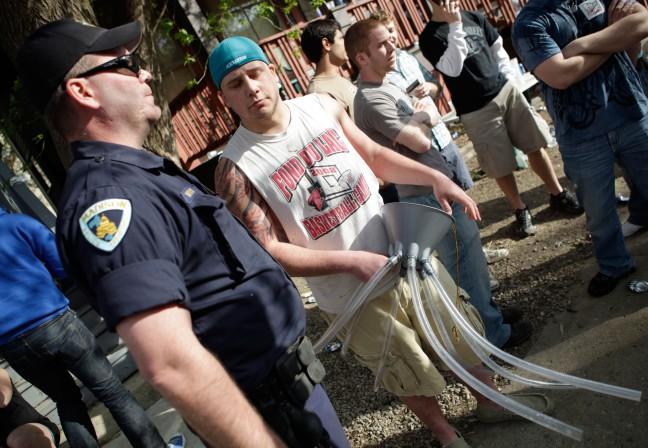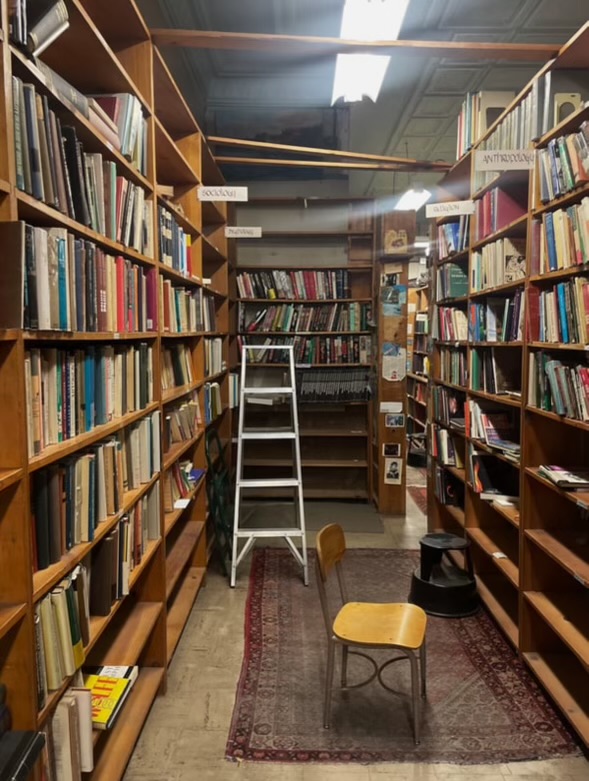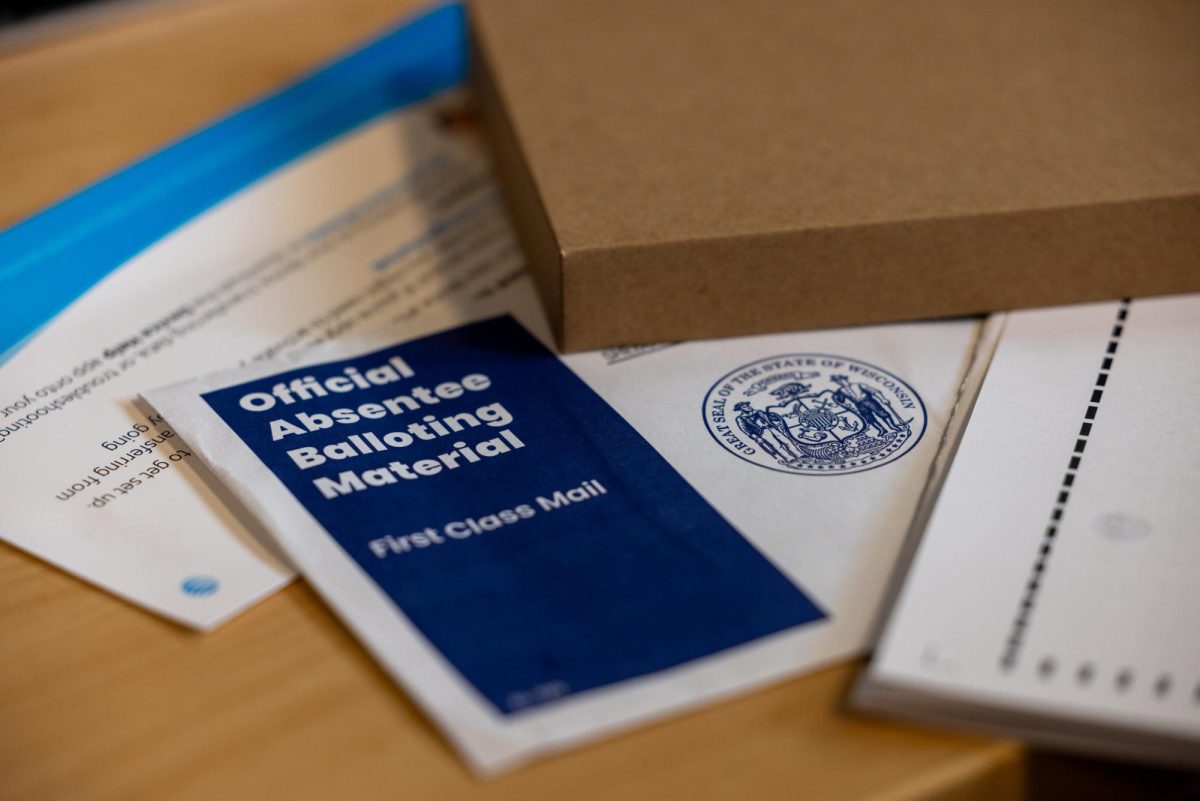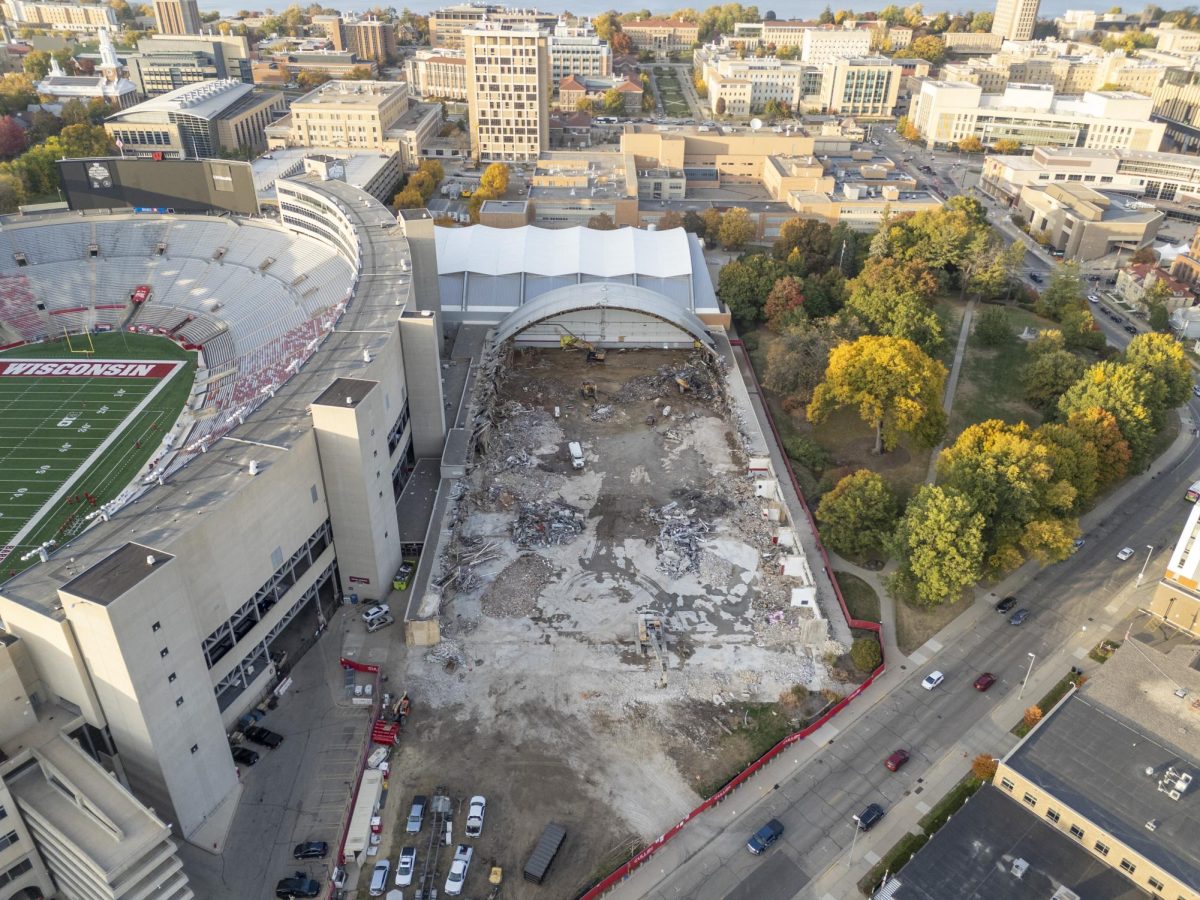Mifflin — that time of year when the grass is just a little bit greener, the sun a bit brighter and the lawns of one special street run freely with beer. For many University of Wisconsin students, the Mifflin Street Block Party marks the last hurrah before finals and is a tradition like none other in the Madison area.
Now, bring yourself back 41 years. It’s May 3, 1969 and students newly freed from being required to live in university housing have established the Mifflin area as the center of anti-Vietnam War activism in the area.
The city’s rejection of an anti-war dance in the street, first resulting in a protest, is now a riot that shows no signs of slowing down. Dozens of people are injured, and the Madison Police Department arrests 100 people, marking the beginning of a long struggle between the city and its Mifflin residents rife with unrest and, above all else, partying.
Early years rooted in activism
Former Madison Mayor Paul Soglin said the first block party in 1969 was formed after a long year of protests and activism. Three or four Mifflin residents decided to host the event. They photocopied fliers and posted them all over Mifflin and Basset streets.
He said 30 to 40 people showed up in front of 512 Mifflin St., but unbeknown to them, 20 to 30 police officers were gathered, ready to break up the party.
“Stay behind me. We’re going to go down there and crack some skulls,” Soglin said police inspector Herman Thomas told the officers.
Over 100 people were arrested that weekend, including Soglin twice.
The first four years of Mifflin parties saw little stability, with attendance remaining below 1,000 and a widely varying date of occurrence. The party maintained its activist edge, despite a drop in radical nature after the Sterling Hall bombing in the fall of 1970 that caused the death of a university researcher.
Soglin said those years symbolized the struggle between police and demonstrators over who controlled the streets.
In 1971, the city again denied a street permit for the event via a veto by then-Mayor William Dyke, leading to small scuffles between revelers and cops during the day before the event descended into greater conflict after nightfall.
“After the initial conflict and gassing at 7:30 p.m. … history repeated itself once again as most of the action was centered around the Mifflin Co-op building. Barricades consisting of garbage cans, sewer gratings, rocks, lumber and whatever else was available were built across the middle of the street…,” the April 5, 1971 Badger Herald article reads.
“Further up Basset Street, more barricades were erected and set afire as demonstrators took advantage of a lull in the action to roll a couple large trash receptacles and tires from a nearby tire shop into the middle of the street.”
End of war brings semblance of calm
After no party was held in 1972 and a relatively uneventful party in April of 1973, Mifflin gained its traditional early May slot and continued to draw an increasing number of guests. With the sponsorship of the now-defunct Mifflin Street Co-op at the corner of Mifflin and Bassett streets, the event often saw a mostly hands-off approach from police, resulting in few arrests.
Mifflin moved to Brittingham Park for one year in 1978. The next year, the city instituted “Mifflin on the Mall,” drawing thousands to State Street and a few hundred to Mifflin for the next few years.
In 1982, thousands returned to Mifflin, and under continued sponsorship from the co-op, the number of attendees continued to increase through the ’80s. After several years of record cost to the city and more than 10,000 in attendance, the Mifflin Street Co-op withdrew its sponsorship in 1991 when the city announced it would limit alcohol consumption to enclosed beer gardens.
Attendance then dropped until 1994 when two stages organized by Madison-based Black ‘n Tan Productions drew 30,000.
Chaos returns
The next couple of years saw a spike in unrest among partiers, spinning out of control in 1996 when more than 30 officers were required to subdue a rioting crowd.
According to the May 6, 1996 Badger Herald article, after a fire truck arrived to extinguish a bonfire in the middle of the street in the 500 block of Mifflin, rioters hurled bottles, bricks and Molotov cocktails at police officers and firefighters who retaliated with hoses and pepper spray.
After donning riot gear, enforcement officials extinguished around eight bonfires throughout the night, going after the final one after the street’s main crowd was dispersed at 2 a.m.
“To shouts of ‘Defense!’ several people lit another fire and took shelter behind sheets of plywood to protect themselves from the fire hose,” the Herald said.
“The fire ladder began sweeping slowly from left to right as the truck moved forward, drenching the street and, for the first time, people on the sidewalks as well.
“Methodically reclaiming Mifflin one slow inch at a time, the police cleared Mifflin’s 400 block shortly after 2:30 a.m.”
All in all, at least 20 officers were injured, a man was stabbed and 30 tons of trash were removed from the area.
“It was the most inhumane behavior I had ever experienced in my life,” Ald. Mike Verveer, District 4, said. “It was just horrendous.”
The Monday after, city officials gathered and called for an end to the block party, saying they would do whatever they could to ensure Mifflin did not return to Madison.
Road to regulation
Verveer said he held three neighborhood meetings that year in an attempt to keep the event alive and welcome.
To that end, the next few years saw increased arrests due to a much higher police presence, but besides drinking and minor misconduct, few issues were reported. Attendance numbers oscillated wildly, and the city reported high costs despite collecting an increased number of fines. After riots rocked the 2002 Freakfest celebration, the city cracked down on the 2003 Mifflin event, resulting in nearly 400 citations.
High numbers of arrests continued through 2008 when a record 440 people were arrested, despite attendance numbers hovering around 10,000.
In 2009, Mifflin saw the first instance of a sponsor since 1995 in the form of DCNY-PRO bringing a soundstage and other perks to the party. With more than 15,000 in attendance, the event saw 164 arrests.
A different kind of party
Today, Mifflin has dropped its political activism connotations in favor of a sense of spring-loving, drunken revelry. Officials hope Saturday’s event, which will feature a beer garden and expanded restroom facilities, will follow in the footsteps of 2009.
“Other than the fact that it occurs on the first Saturday in May, and it’s in the 500 block of Mifflin St., there’s little in common,” Soglin said. “There was always a certain amount of drinking and smoking pot, but that was just a portion of the activities, not the focus.”
Verveer said while he still vividly remembers the riot of 1996, he spends today’s parties more worried that someone will get hurt rather than a riot breaking out. He added the city is now working on finding the right balance between police supervision and student freedom.
“You have to try and find a happy medium,” he said. “And I think slowly but surely we’re starting to find a happy medium.”








